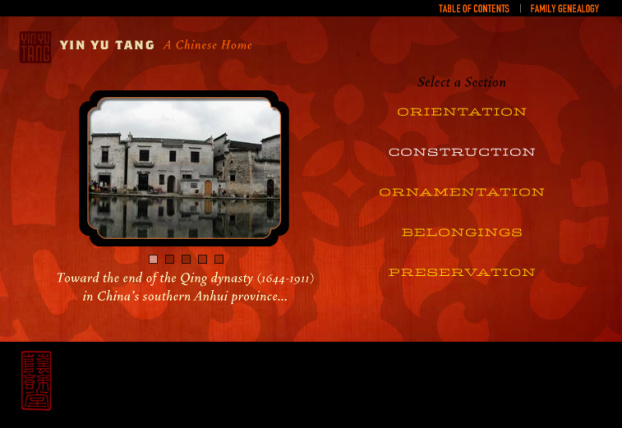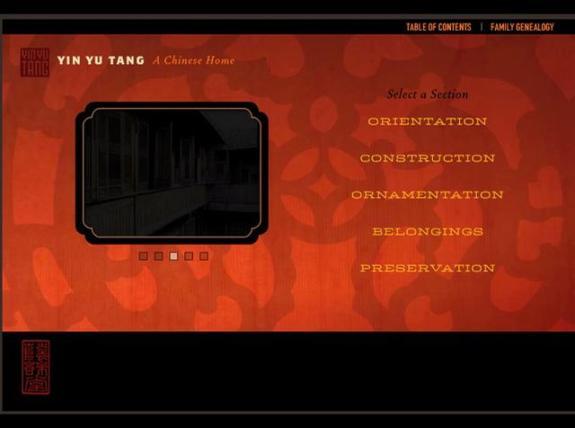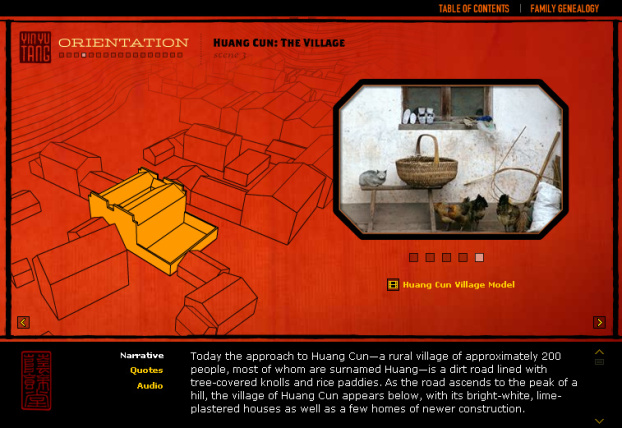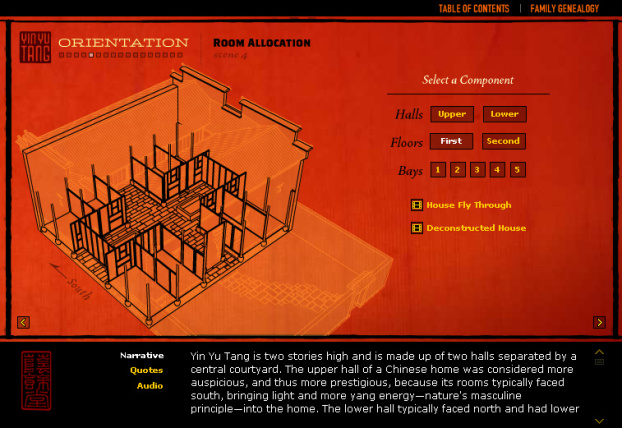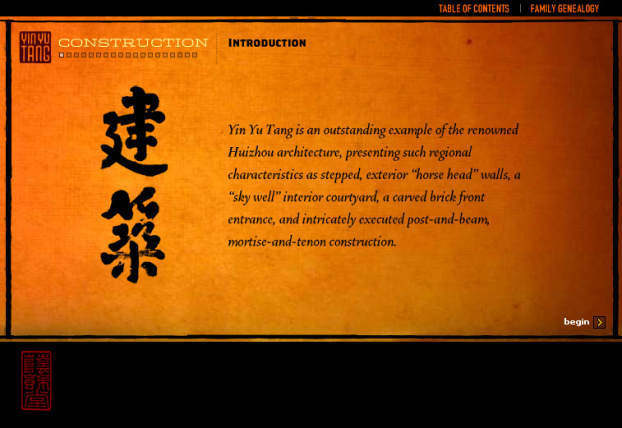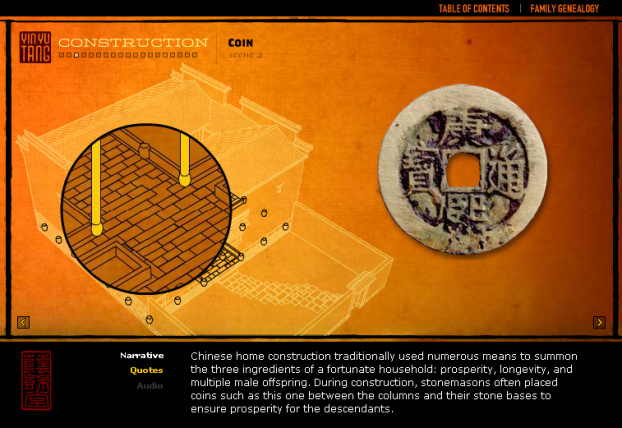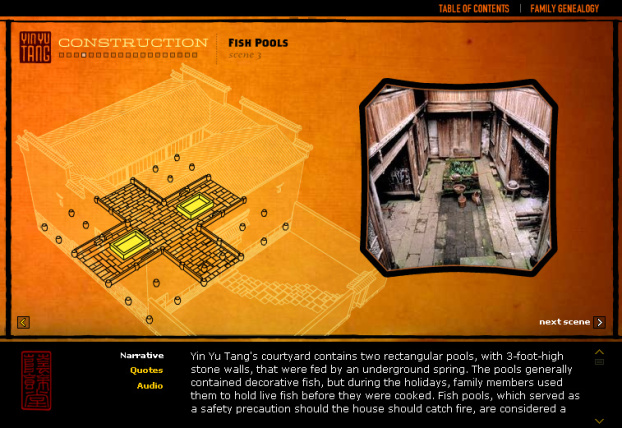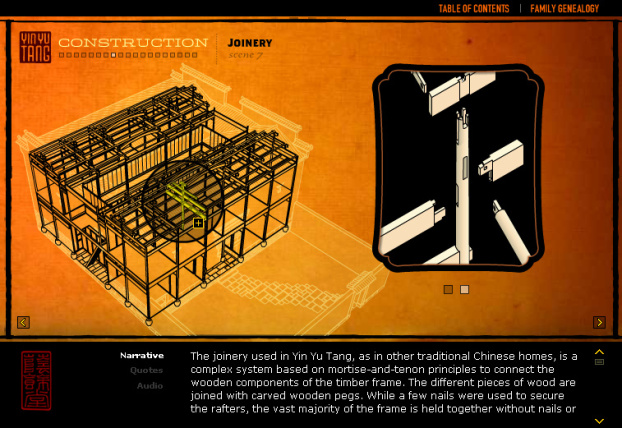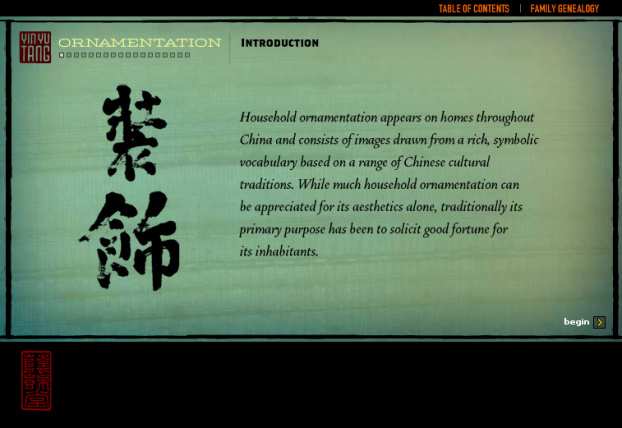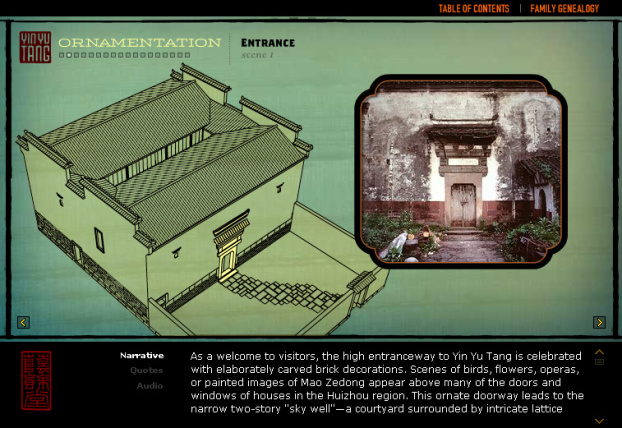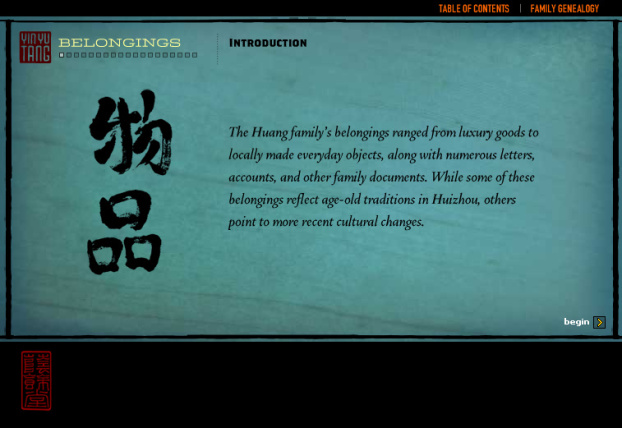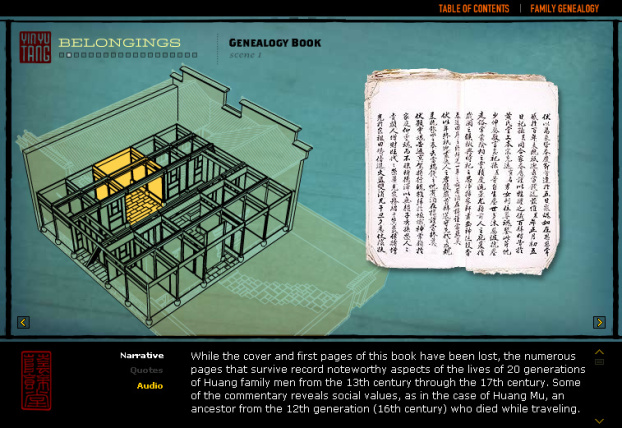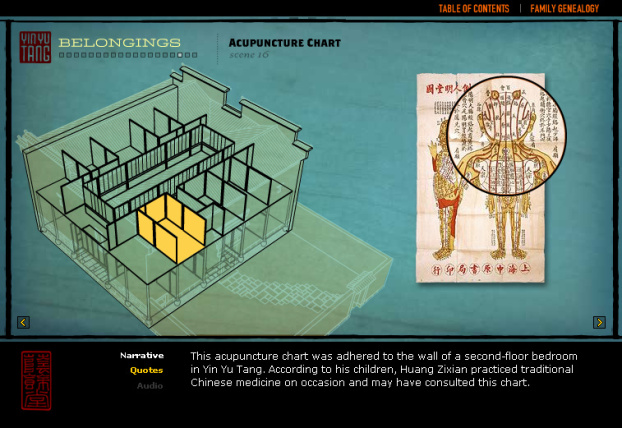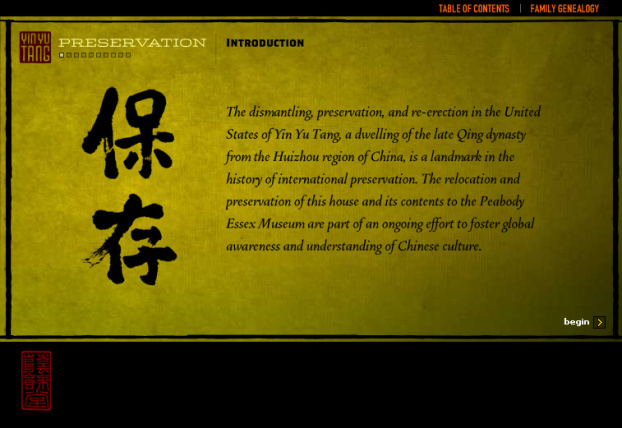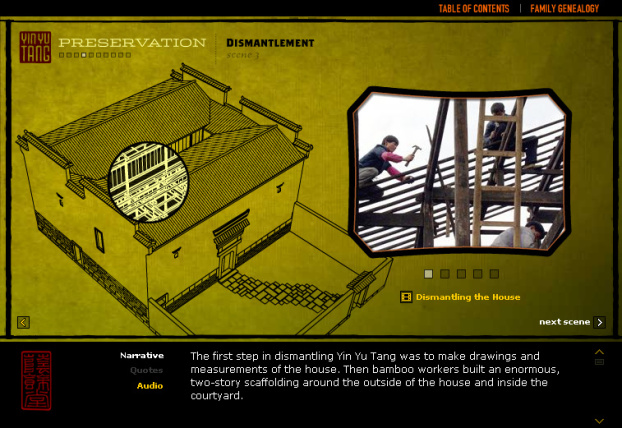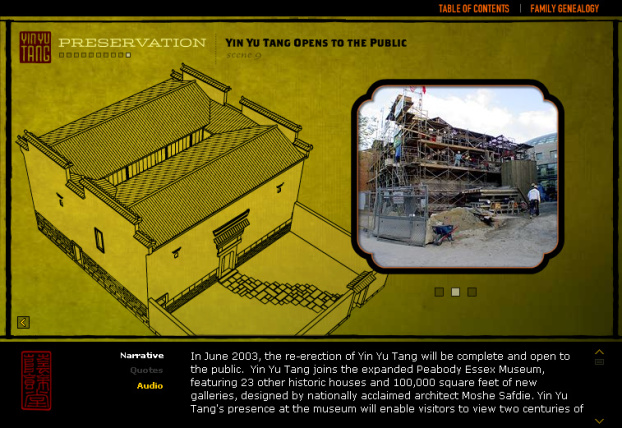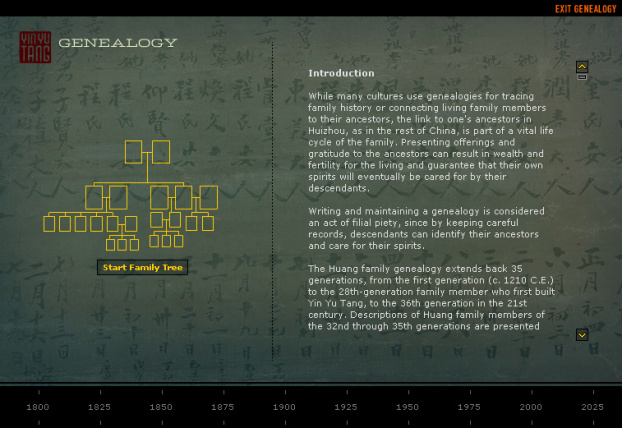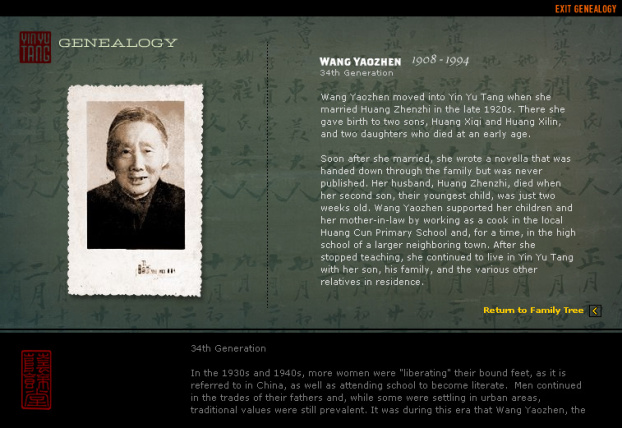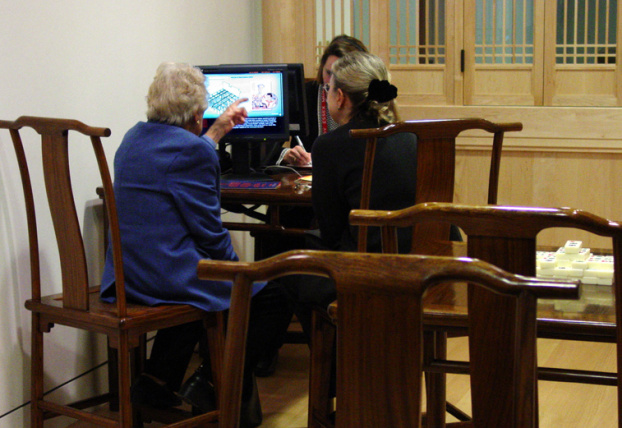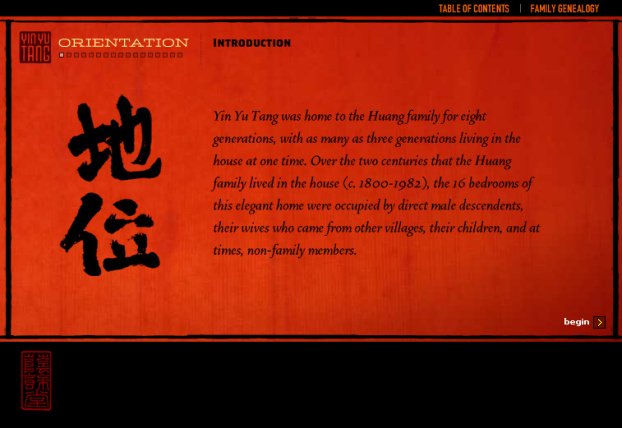Yin Yu Tang
Through this media-rich experience, Web site and kiosk users explore a 3-D house to discover a Chinese region’s renowned architecture and the generations of a family that made it their home.
Yin Yu Tang is an elegant, rural home originally located in a small, remote village in the southeastern region of Huizhou in China’s Anhui Province. Built in the late Qing dynasty (1644–1911) by a Chinese merchant surnamed Huang, the residence was home to the Huang family for over two hundred years. By the mid-1980s, all surviving Huang family members had moved away from their home which sat in silence until 1997, when the family and the government authorized the house to be transported across the world, to be opened to the public at the Peabody Essex Museum in Salem, Massachusetts. Through this media-rich, interactive experience, Web site visitors and kiosk users can explore the house to discover this rare example of the region’s renowned architecture and learn about the daily life of the Huang family. The heart of the experience is comprised of five thematic sections that provide a unique lens through which the house can be examined, including Orientation, Construction, Ornamentation, Belongings, and Preservation. Content is segmented into distinct “scenes” within each theme; as visitors navigate between scenes, a persistent 3-D model view of Yin Yu Tang reacts to reveal different features of the house. A visual interactive family tree, dozens of audio interviews, hundreds of historical and contemporary photographs, and many videos are scattered throughout the experience to make this Chinese home “a living house.”
